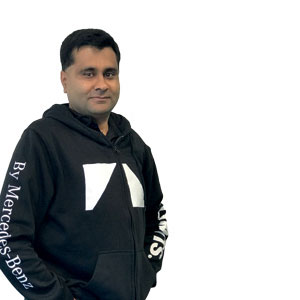THANK YOU FOR SUBSCRIBING

Automotive Industry (R)evolution in the Digital Age
Simon Floyd, Director of Business Development & Strategy for PLM Solutions-Worldwide Discrete Manufacturing Industry, Microsoft


Simon Floyd, Director of Business Development & Strategy for PLM Solutions-Worldwide Discrete Manufacturing Industry, Microsoft
It’s easy to have an affinity for the automotive industry. Vehicles are a reflection of our society:their style, their features, and their utility. They are the embodiment of our past, our present and our future. We have a fascination with vehicles because they are so fundamental. When new vehicle is designed, it must cater to the complexity of a changing society. This is why the automotive industry must innovate constantly or face diminishing value and relevancy.
The innovation challenge is significant and daunting but also extraordinarily exciting. While one can argue that the common car hasn’t really changed in over 100 years, after all they still have 4 wheels and a cabin, one can argue that they are changing rapidly and evolving. The truth of the matter is that the cars of today are remarkably advanced. Their structures are a wonder of engineering and materials. Their engines are increasingly efficient, electric or hybrid. They are managed by embedded computer systems that increase efficiency, safety and reliability. In some cases, they have systems dedicated to entertainment or to connect our many devices for convenience, access to information or just to communicate safely while driving. The connection to our digital lives, and the influence of living in an internet connected society are catalysts for the single biggest opportunity in the automotive industry. To go beyond the single vehicle experience to community of drivers; to create an experience that is of benefit to society. Taking advantage of this opportunity is challenging. It requires us to think about vehicles the same way we think about other devices in our lives. It forces a great collision between the world of information technology and the automotive industry, making it subject to trends such as social, mobile, big data, cloud computing and the internet of things. These are the trends that will greatly influence the vehicles of tomorrow."Rather than sensors being used to uncover unsafe or risky conditions, they can be used to enhance the experience"
The Internet of Things: Intelligent Systems in Vehicles
It’s almost inconceivable to discover that there are more devices in our lives than people. In 2014 we are a race of 7.2 Billion individuals and live in a world of an estimated 10 Billion devices that is expected to each 50 Billion by 2020. Even if these estimates are grossly overstated, they still represent a significant trend. Today, you may own a car that has integrated services via a satellite connection. These services focus on vehicle maintenance, safety, directions and entertainment.
Weekly Brief
I agree We use cookies on this website to enhance your user experience. By clicking any link on this page you are giving your consent for us to set cookies. More info
Read Also
Navigating Compliance Challenges in ESG AML and Digital Onboarding
A Vision for the Future: Automation, Robotics, and the Smart Factory
The Rise of Hyper Automation
Transforming Business Operations with Robotic Process Automation
Combining Automation with AI to Achieve Human-Like Interaction
Implementing RPA - 5 Ultimate Prerequisite
Incorporating the power of recognition into our vendors' sustainability journey
Elevating Guest Experience with Data





















